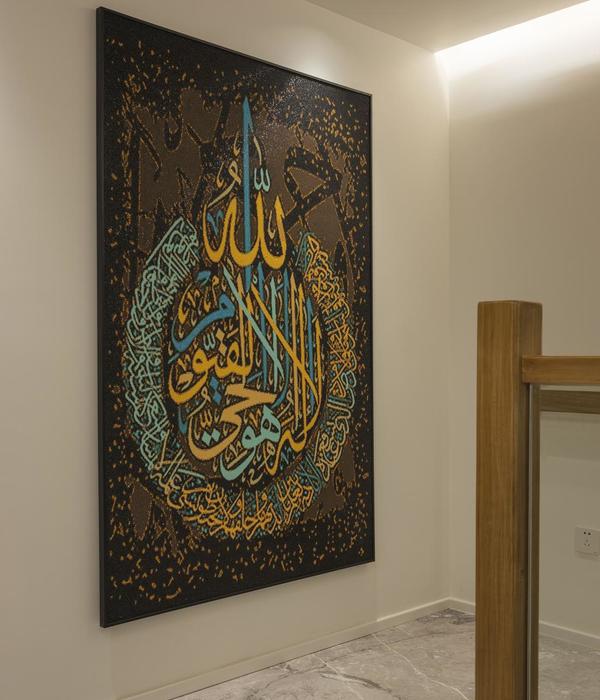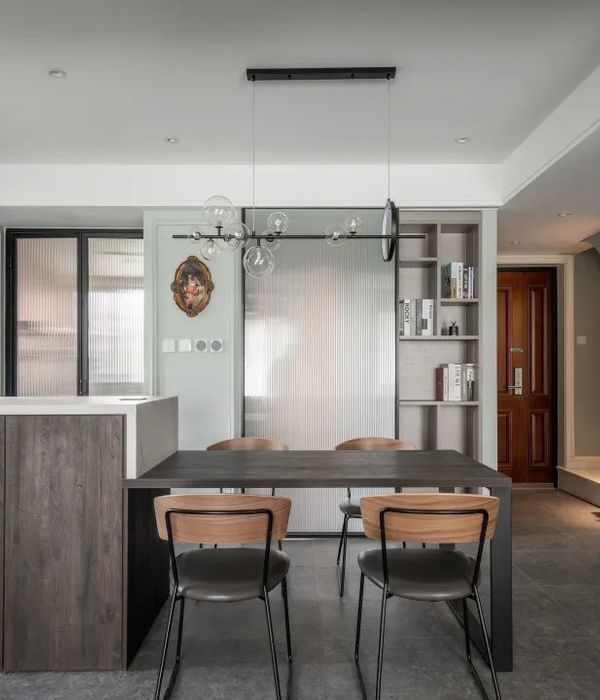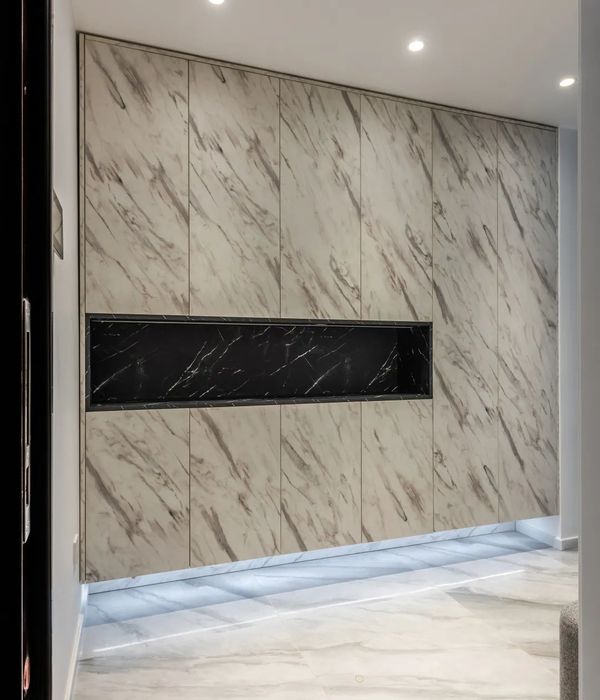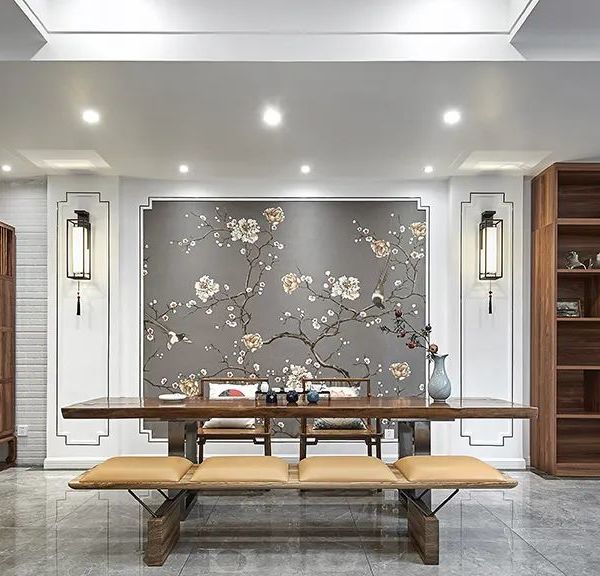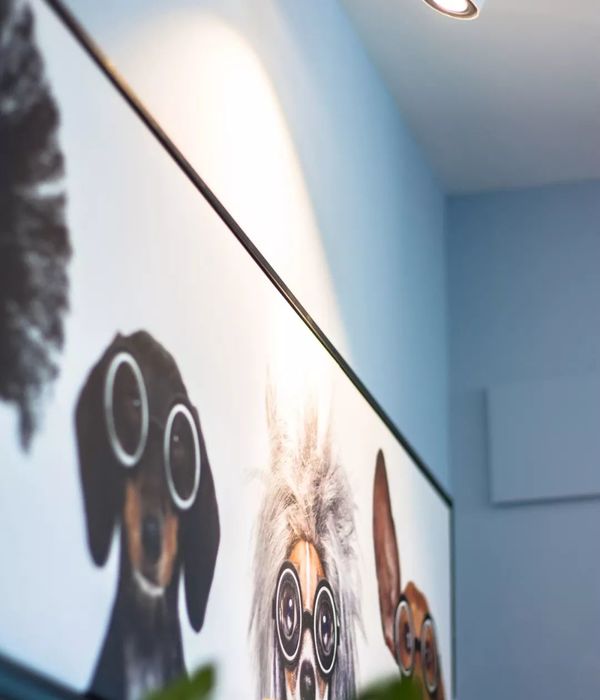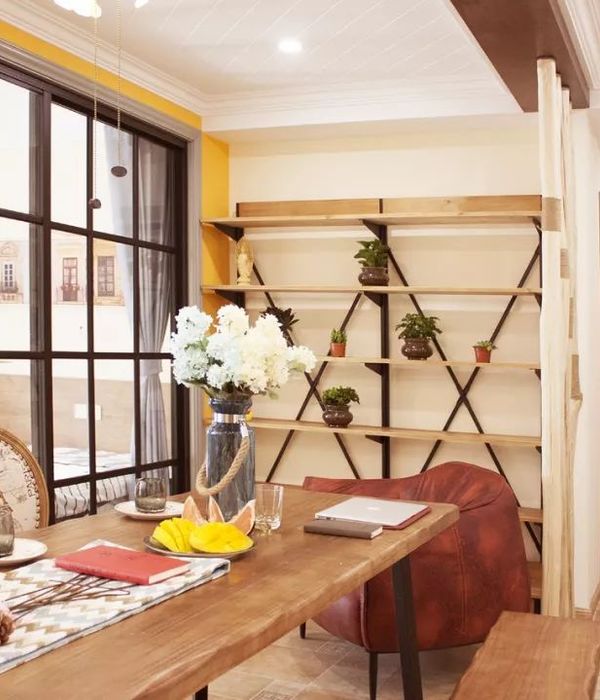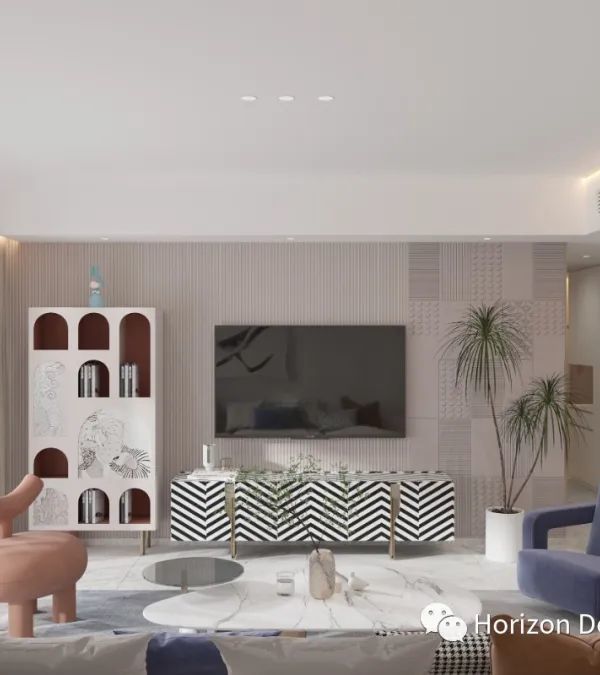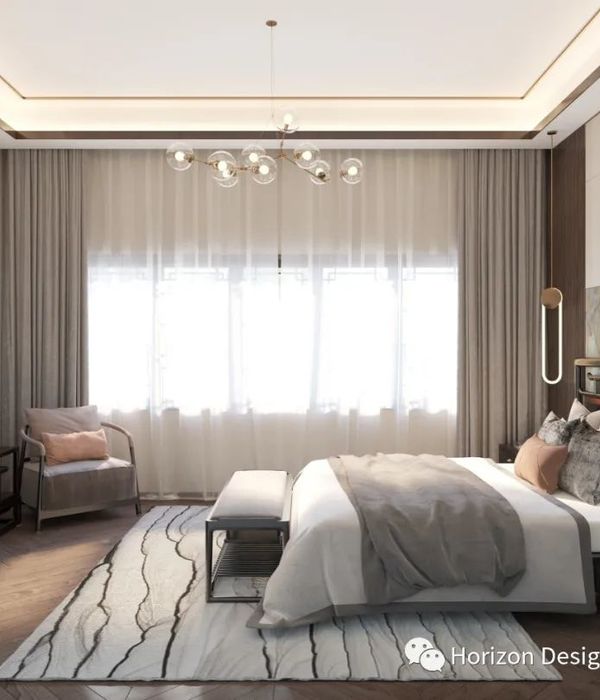▼项目视频, project video ©OHLAB
在Palma西南角的Bonanova区,Paral·lel 公寓大楼坐落在一个安静的住宅区之中。该项目由两个独立的建筑体块组成。大楼遵循城市规划条例中底层架空和向上三层的原则,尽管空间有限以及密度较高,12个单元都可以享受到持续、节能、隐私性的都市理念以及小型的私人花园和游泳池。复式住宅分为 6 个带花园和泳池的底层单元,以及 6 个带屋顶泳池的顶层公寓,可将Palma湾以及Mayor海滩和Illetas的美景尽收眼底。
Paral·lel is a residential project located in the neighborhood of Bonanova, a quiet residential area in the southwest of Palma. The project consists of two independent blocks.Taking full advantage of the urban planning regulations of ground floor plus three levels, the buildings have been designed so that, despite the density and limited space, each of the 12 dwellings can enjoy the suburban ideal of sustainability, energy efficiency, privacy, and even small private gardens and pools. The duplex dwellings are divided into 6 units on the ground floor with garden and pool, and 6 penthouses with rooftop pool that offer panoramic views towards Palma Bay, as well as Cala Mayor and Illetas.
▼项目概况, project overview © José-Hevia
▼项目与周围环境, project and surroundings © José-Hevia
主立面享有最佳视野和花园,由折叠的木格栅百叶窗组成,这些立面元素不仅仅过滤光照,也让人联想起地中海传统凉棚和花格的动态效果。这一设计可以很好的维护住户的隐私,并调节全年的光照。 The main facades, situated in the best orientations with views and gardens, are composed of folding wooden slat shutters that act as solar filters, creating a dynamic effect reminiscent of the traditional pergolas and lattices of the Mediterranean. This solution allows for privacy regulation and control of sunlight entry throughout the year.
▼主立面,main facade© José-Hevia
立面的表皮设计以多种形态为特征,可以根据住宅的需要、朝向和阳光照射情况,将面板抬起,从百叶窗变成雨蓬。这种技术可以在冬季利用太阳能,在夏季防止过热,从而创造出一种多变、有机和可渗透的围护结构,反映出住宅的内部生活。百叶窗的设计通过太阳能研究进行了优化,并从Mallorcan岛的本土传统中汲取了灵感。对于提高居住的能效来说,交叉通风的木格栅和热循环系统的组合至关重要。除了满足这些需求,主立面的水平木格栅百叶窗同样满足持续性和对环境负责的要求。所使用的木材都经过了认证,这意味着这些木材是通过负责任和可持续的森林管理方式获得的。对于已认证木材的使用不仅促进了对环境的保护和生物多样性,也保证了木材和其衍生产品的整个供应链的可追踪性。这意味着在生产过程的每个阶段都要确保符合社会、经济和环境要求。
▼环境策略, environmental strategy © OHLAB
The facade’s skin is characterized by its versatility, as the panels can be lifted and transformed from shutters to pergolas based on the needs of the dwelling, orientation, and sun exposure. This technique enables solar utilization in winter and protection against overheating in summer, creating a changing, organic, and permeable envelope that reflects the interior life of the dwellings. The design of the shutters is optimized through solar studies and draws inspiration from Mallorcan vernacular tradition. The combination of shutters with a cross- ventilation and heat recovery system is crucial in maximizing the energy efficiency of the dwelling. In addition to fulfilling this function, the horizontal wooden slat shutters that compose the main facade meet sustainability and environmental responsibility standards. The wood used is certified, meaning it has been obtained through responsible and sustainable forest management. The use of certified wood not only promotes environmental protection and biodiversity, but also ensures traceability of the wood and its derivative products throughout the supply chain. This means that compliance with social, economic, and environmental requirements is ensured in each phase of the production process.
▼可折叠面板,foldable panel © José-Hevia
▼从百叶窗到雨蓬,from shutter to pergolas © José-Hevia
该项目旨在达到节能减排的最高标准和最低冷却需求。与传统大楼相比,Paral·lel公寓大楼极大的降低了对空调和冰箱的需求,并大大降低了能耗。 The project has been designed to achieve maximum energy efficiency and very low cooling demand. This significantly reduces the need for air conditioning and refrigeration compared to conventional buildings, resulting in reduced energy costs.
▼由木格栅构成的立面,composed of folding wooden slat shutters © José-Hevia
大楼的侧立面展示了建筑如何融入城市环境。从这一角度来说,更加坚固和密封的外墙可以阻隔隔壁邻居和邻近街道的视线,保证住户的隐私。侧立面对不同纹理的选择和大地色的色调使建筑在视觉上与城市环境融为一体,并与城市肌理融为一体。不寻常的开口和不同纹理色调的组合打破了侧立面的扁平和常规,为建筑提供了一种更有机更自然的特质。
The lateral facades of the building present a strategy that allows for integration into the urban context. In this sense, more solid and hermetic facades have been designed to limit views towards the closest neighbors and adjoining streets, guaranteeing user privacy. The choice of different textures and earthy tones in the lateral facades contributes to the visual integration of the building into the urban environment and its contextualization within the urban fabric. The irregularity in the openings and the combination of different textures and tones break away from the flatness and regularity of the lateral facades, providing a more organic and natural character to the building.
▼侧立面, the lateral facades of the building© José-Hevia
大楼中设有雨水收集和储存系统,以达到对可利用水资源的综合运用并降低对环境的影响。根据蓄水池的安装,该系统可以收集并储存从大楼屋顶及室外区域流入的雨水。储存的雨水有诸多功能,包括补充因蒸发导致的泳池蓄水不足。利用循环利用的雨水蓄满泳池,这样就避免了饮用水的过度消耗。此外,储存的水还用于灌溉地中海风格的花园,这些花园以维护成本低、适应当地气候和条件而著称。对雨水的循环利用也有助于降低大楼的水足迹。
A rainwater collection and storage system has been integrated into the building with the aim of utilizing available water resources and minimizing environmental impact. This system, based on the installation of cisterns, allows for the collection and storage of rainwater produced on the roof and exterior areas of the building. The use of this stored water serves various purposes, including supplying water to compensate for the amount lost due to evaporation in the pools. By reusing rainwater to fill the pools, excessive consumption of potable water is avoided. Additionally, the stored water is also used for irrigating the Mediterranean-style gardens, known for their lowmaintenance and adaptation to the local climate and conditions. The use of rainwater for irrigation helps reduce the water footprint of the building.
▼屋顶泳池, roof pool © José-Hevia
该项目所使用材料的选择是打造与地中海环境相协调的可持续建筑的关键因素。为此,建筑师对天然材料和当地材料进行了精心挑选,使建筑与周围环境和谐相处,并对气候和环境条件做出了适当的回应。
The selection of materials used in the project has been a key factor in creating sustainable architecture that is contextualized within its Mediterranean environment. In this regard, a careful selection of natural and local materials has been carried out, allowing for a harmonious relationship between the building and its surroundings, as well as an appropriate response to climatic and environmental conditions.
▼与地中海环境相协调,contextualized within its Mediterranean environment © José-Hevia
对天然材料的使用,例如Mallorcan液压瓦和定制的水磨石,不仅展示了当地的建造传统,也在大楼内部创造了一种温暖怡人的氛围。这些材料在开采和生产过程中对环境的影响也较小,因为它们是当地资源,只需进行最少的工业加工。这些材料就地取材,最大限度地减少了运输,从而降低了二氧化碳排放量。此外,地板和门都选用了橡木,这种高质量耐用的材料为空间增添了温度。
The use of natural materials, such as Mallorcan hydraulic tiles and custom-made terrazzo, contributes to the creation of a warm and welcoming atmosphere inside the building, while reflecting the local construction tradition. These materials also have a low environmental impact in terms of extraction and production since they are local resources with minimal industrial processing. Being locally sourced materials, they minimize transportation and consequently reduce CO2 emissions. Furthermore, great importance has been given to the choice of oak wood for floors and doors, a noble and durable material that brings warmth to the spaces.
▼室内楼梯间,interior staircase © ana lui
▼室内空间,interior space © José-Hevia
▼洗手间,restroom © José-Hevia
▼首层平面, ground floor plan © OHLAB
▼二层平面, first floor plan © OHLAB
▼三层平面, second floor plan © OHLAB
▼四层平面, third floor plan © OHLAB
▼东立面, east elevation © OHLAB
▼西立面, west elevation © OHLAB
▼北立面, north elevation © OHLAB
▼南立面, south elevation © OHLAB
▼剖面1,section 1 © OHLAB
▼剖面2,section 2 © OHLAB
▼细部1,detail 1© OHLAB
▼细部2,detail 2 © OHLAB
▼体块轴测,mass axonometric © OHLAB
Architecture and Interior Design: OHLAB / Paloma Hernaiz and Jaime Oliver OHLAB team: Paloma Hernaiz and Jaime Oliver with Rebeca Lavín, Robin Harloff, Silvia Morais, Loreto Angulo, Luis Quiles, M.Bruna Pisciotta, Pedro Rodríguez, Mercé Solar, Eusebiu Spac, Lara Ortega. Quantity surveyor: Jorge Ramón Structure: DICAES Timber facade consultancy and manufacturing: GRUPO GUBIA M&E Engineering consultants: INGENIO consultores Kitchens and furniture: Espacio Home Design Contractor: Diazgar
{{item.text_origin}}

